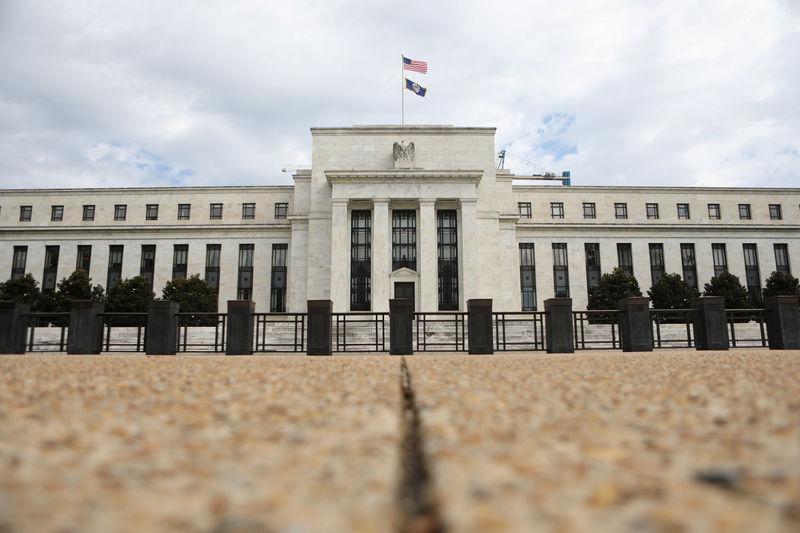By Tom Arnold
LONDON (Reuters) - Emerging economies from Peru to Romania are in the firing line as looming U.S. tapering raises the risk of outflows from local currency bond markets, hitting a vital funding source for governments striving to recover from the coronarvirus crisis.
As the U.S. economy edges back to health, the Federal Reserve is wrestling with the question of when to begin unwinding its monthly $120 billion in asset purchases that has flooded markets in the aftermath of the pandemic.
Any tapering could be bad news for some emerging local bond markets, which make up more than 80% of developing nations' fixed income universe and form the bedrock for government finances. Local emerging debt sucked in foreign flows of at least $149 billion over the last year, the bulk of to China.
Peru appears most vulnerable, with about 53% of holdings foreign owned, according to Institute of International Finance data. The Czech Republic and South Africa are also higher risk, with foreigners holding nearly a third.
Memories of 2013 are fresh. Back then the Federal Reserve withdrew support it unfurled for the U.S. economy after the 2008 global financial crisis spooked yield-hungry investors.
That hit emerging markets, particularly the "fragile five" - Brazil, India, Indonesia, Turkey and South Africa - as foreign capital exited and their currencies plummeted.
"A higher reliance on foreigners not only increases the chance of capital outflows, but will also make it more difficult to finance still-elevated budget deficits if foreign capital turns tail," wrote Tellimer's Patrick Curran in a research note.
From a current account perspective, Turkey, Colombia and Romania are among the most vulnerable.
Turkey's current account has shown little improvement since last year and Deutsche Bank (DE:DBKGn) expects a current account deficit of $19 billion or 2.7% of gross domestic product (GDP) for 2021. Colombia was downgraded to junk by S&P Global (NYSE:SPGI) Ratings last week warning its fiscal adjustment will be more protracted and gradual than previously expected.
Romania and Colombia still rely significantly on short-term flows, said David Rees, Schroders (LON:SDR) senior emerging markets economist.
"If fears of Fed tapering, or indeed some other unexpected development, shook sentiment and triggered capital flight, then these vulnerabilities would be exposed," he said.
"In a best case scenario, currencies would come under pressure. But large and persistent outflows might force central banks to hike rates in order to shore up the capital account and imports would need to be cut back which in turn would be mirrored by a decline in domestic demand and perhaps recession."
(Graphic: Emerging market current account balance (% of GDP): https://fingfx.thomsonreuters.com/gfx/mkt/xegvbdxgyvq/Capture.PNG)
Years of subdued capital flows have prevented emerging markets building up large external imbalances akin to 2013.
Recessions triggered by the pandemic caused imports to collapse and current accounts to nudge into surplus. Deficits are re-appearing, however, as economic recoveries take off though the investment overhang is not as large as 2013.
"The extent to which global investors are overweight local debt in EM is very light at the moment," said Angus Bell, senior emerging market debt portfolio manager at Goldman Sachs (NYSE:GS) Asset Management. "The risk indicators today are not flashing anywhere to the same extent red as they were back in 2013."
(Graphic: Emerging market debt facing smaller foreign investment overhang than 2013 : https://graphics.reuters.com/EMERGING-BONDS/xegpbdxxypq/chart.png)
